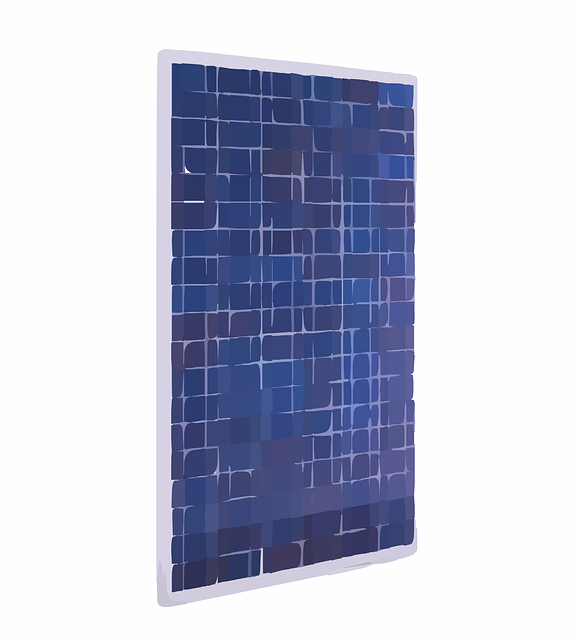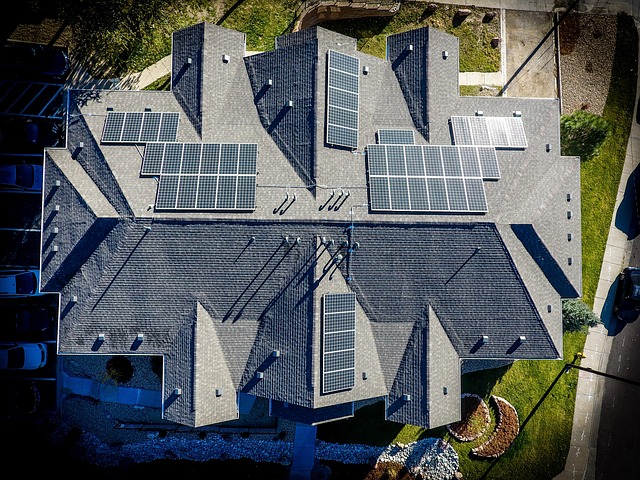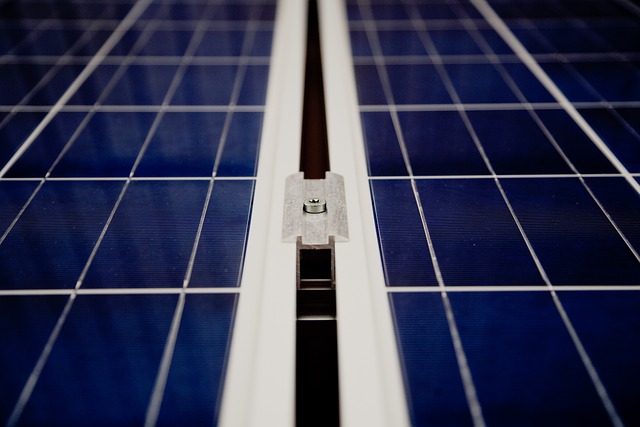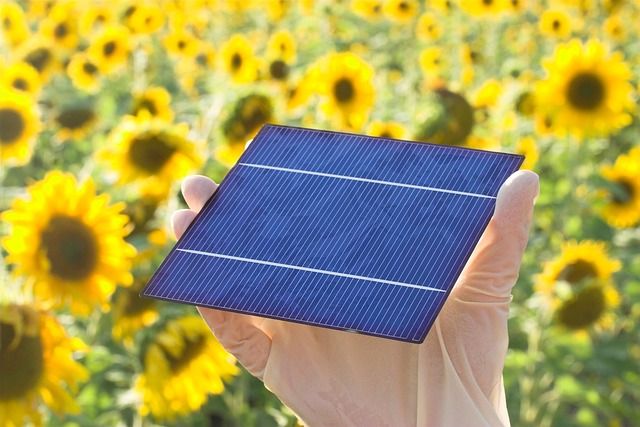Solar energy, driven by advancements in photovoltaic (PV) cells, is a growing solution for global energy needs due to its efficiency, environmental benefits, and cost-effectiveness. Technological improvements enable harnessing sunlight even on cloudy days, making it suitable for both residential and large-scale applications. With significant reductions in panel costs and increased accessibility, solar power is becoming an attractive alternative to fossil fuels while contributing to a greener future. Despite initial installation costs and weather-related variability, ongoing research and innovations are addressing these challenges, positioning solar energy as a key driver towards sustainable global energy security.
Solar energy, a renewable powerhouse, has captured global attention as a viable solution for our energy demands. This article explores the multifaceted world of solar efficiency, from harnessing its potential and environmental advantages to technological breakthroughs and economic viability. We delve into common challenges and successful global implementations, while also peering into the future of this ever-evolving technology. Discover how solar energy is not just an option but a crucial step towards a sustainable tomorrow.
- Unlocking the Potential: Understanding Solar Energy’s Efficiency
- The Environmental Impact: Why Solar is a Sustainable Choice
- Technological Advancements: Boosting Solar Panel Performance
- Economic Benefits: Making Solar Energy Affordable for All
- Overcoming Challenges: Common Obstacles to Solar Adoption
- Global Implementation: A Look at Successful Solar Projects
- Future Prospects: The Ever-Evolving World of Solar Technology
Unlocking the Potential: Understanding Solar Energy’s Efficiency

The efficiency of solar energy is a topic that has garnered significant attention as we strive for a sustainable future. Unlocking the full potential of this renewable resource is key to addressing our global energy demands. Solar panels, composed of photovoltaic (PV) cells, convert sunlight directly into electricity, offering a clean and abundant power source. The efficiency of these cells varies, with advancements in technology continually pushing for higher conversion rates.
Modern solar technologies have made remarkable strides, ensuring that the sun’s energy can be harnessed even on cloudy days or during varying seasonal conditions. This versatility makes solar energy a viable option for diverse applications, from residential rooftops to large-scale power plants. As research progresses, we can expect further improvements in solar cell performance, making this renewable source an increasingly attractive and efficient alternative to traditional fossil fuels.
The Environmental Impact: Why Solar is a Sustainable Choice

The environmental benefits of solar energy are significant, making it a sustainable choice for power generation. Solar panels harness the abundance of sunlight, a renewable and free resource, converting it into electricity with minimal environmental impact. This clean energy source reduces our carbon footprint compared to fossil fuels, which are finite resources that release harmful greenhouse gases when burned.
By choosing solar energy, we can decrease air pollution, preserve natural landscapes, and protect biodiversity. Unlike traditional power plants, solar installations don’t require vast areas of land or water for cooling, minimizing habitat destruction and water usage. This makes solar energy a highly efficient and environmentally friendly alternative, contributing to a greener and more sustainable future.
Technological Advancements: Boosting Solar Panel Performance

The efficiency of solar energy has seen remarkable strides due to technological advancements, pushing the boundaries of what’s possible with solar panels. Innovations such as improved cell designs, advanced materials, and enhanced manufacturing processes have collectively contributed to higher power output and better performance under varying conditions. For instance, modern solar panels can convert a larger portion of sunlight into electricity, even in low-light or cloudy environments, thanks to the use of more efficient cells and anti-reflective coatings that minimize light loss.
These advancements are not only enhancing the overall efficiency of solar energy but also making it a more viable alternative to traditional power sources. As technology continues to evolve, we can expect further improvements in solar panel performance, ultimately driving down costs and increasing accessibility for everyone. This, coupled with growing environmental concerns, underscores the potential of solar energy as a sustainable and reliable energy solution for the future.
Economic Benefits: Making Solar Energy Affordable for All

Solar energy has emerged as a powerful and accessible solution to our energy demands, offering significant economic benefits that make it an attractive option for individuals and communities worldwide. The cost of solar panels has decreased dramatically in recent years, making solar energy more affordable than ever before. This price drop is due to advancements in technology and increased production, allowing for widespread adoption without breaking the bank.
As a result, homeowners, businesses, and governments are embracing solar power, driving further innovation and economies of scale. Incentives, grants, and tax credits also play a pivotal role in promoting the use of solar energy, making it an increasingly viable and cost-effective choice for energy generation. With these factors combined, solar energy is not just an environmentally friendly option but also a smart economic move for anyone looking to reduce their carbon footprint and utility bills.
Overcoming Challenges: Common Obstacles to Solar Adoption

Despite its immense potential, the widespread adoption of solar energy has faced several challenges that have hindered its efficiency as a primary power source. One significant obstacle is the initial cost; installing solar panels can be expensive, deterring many homeowners and businesses from making the switch. However, it’s essential to consider the long-term savings and environmental benefits, which often outweigh the upfront investment.
Another common barrier is the reliance on weather conditions. Solar energy generation varies based on sunlight availability, which isn’t always consistent. Cloudy days or seasonal changes can reduce efficiency, leading to concerns about reliability. Yet, advancements in technology, such as improved panel efficiency and energy storage solutions, are addressing these issues, making solar energy a more viable option for a sustainable future.
Global Implementation: A Look at Successful Solar Projects

The global embrace of solar energy has led to some remarkable projects that highlight its efficiency and potential. From large-scale utility-scale installations to community-driven initiatives, solar power is making significant inroads worldwide. For instance, countries like Germany and Denmark have successfully integrated solar energy into their grids, reducing carbon emissions and providing a substantial portion of their electricity demands. These nations have implemented robust policies supporting renewable energy, enabling the rapid deployment of solar panels on rooftops and in vast fields.
A notable example is the Solar Energy Corporation of India, which has undertaken ambitious projects to harness solar power. The organization’s efforts have led to the establishment of large solar parks and innovative off-grid solutions, particularly in rural areas. These successful implementations showcase how solar energy can be a game-changer in terms of energy security, cost efficiency, and environmental sustainability, offering a promising path towards a greener future for all.
Future Prospects: The Ever-Evolving World of Solar Technology

The future of solar energy looks bright, with continuous innovations pushing its efficiency to new heights. As technology advances, we can expect solar panels to become more powerful and compact, allowing for greater energy production even in areas with less sunlight. Researchers are exploring new materials and designs, such as perovskite solar cells, which promise higher efficiencies and lower costs compared to traditional silicon-based panels.
The evolution of solar technology isn’t just about increasing power output; it’s also focused on enhancing integration and accessibility. We’re seeing the development of flexible and transparent solar films that can be incorporated into buildings’ windows and facades, transforming entire structures into energy generators. Additionally, advancements in energy storage systems, like more efficient batteries, will further ensure reliable and consistent access to solar energy, making it a more viable and attractive option for homes, businesses, and industries worldwide.
Solar energy has proven to be a powerful and efficient renewable source, offering numerous environmental, economic, and technological advantages. As we’ve explored, advancements in technology have significantly boosted solar panel performance, making it a more accessible and affordable option for individuals and communities worldwide. With its vast potential and positive impact, solar energy is set to play a pivotal role in shaping a sustainable future, driving us towards a greener and cleaner world. Embracing these innovations and overcoming challenges will be key to unlocking the full potential of this renewable resource.
